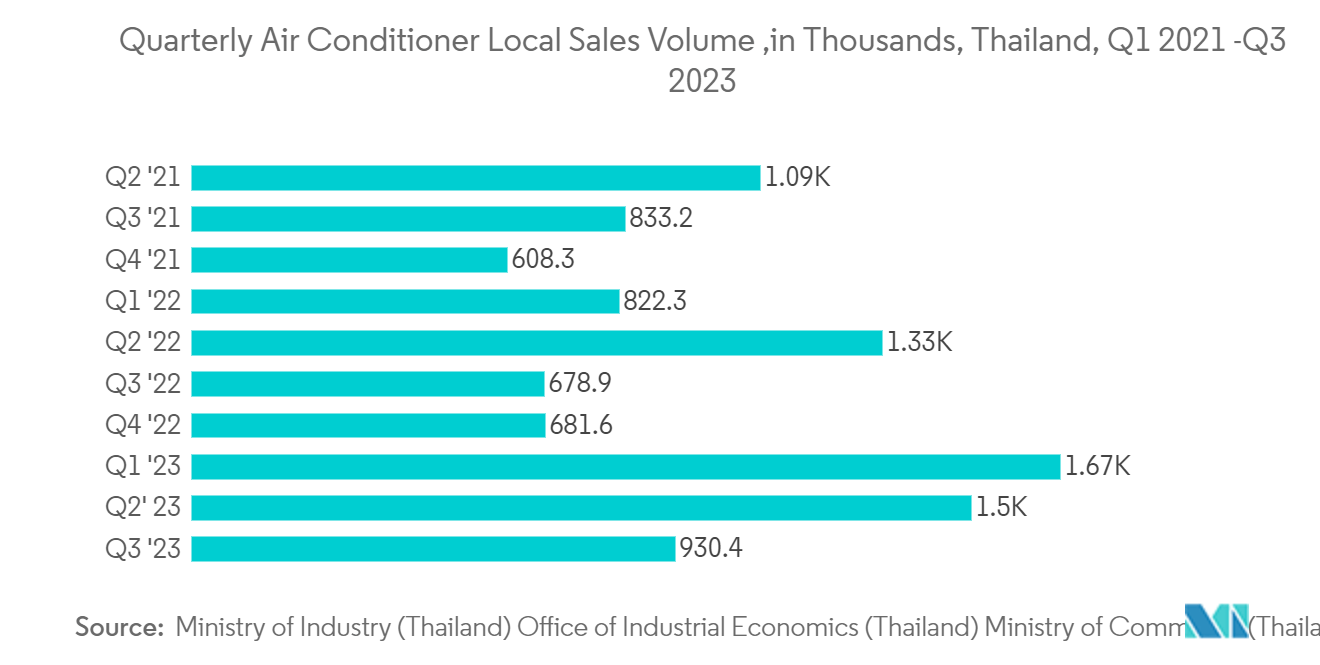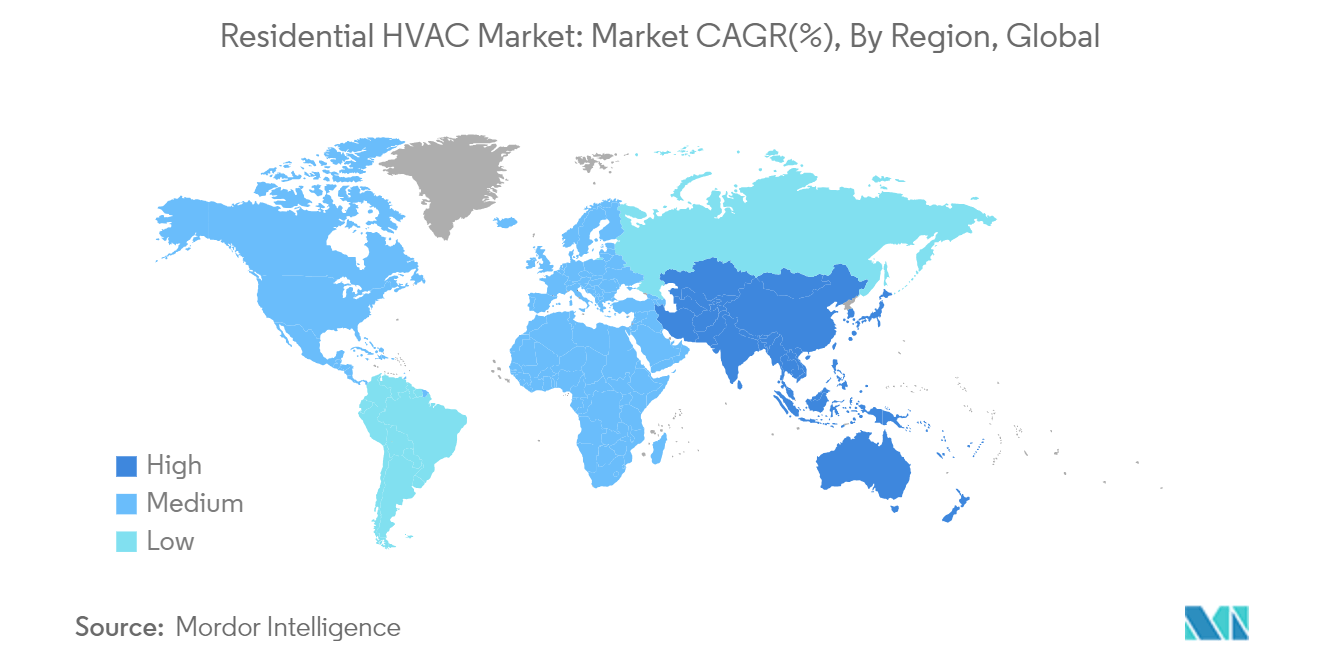Market Trends of Residential HVAC Industry
Air Conditioning/Ventilation Segment to Hold Significant Market Share
- Air conditioning and ventilation systems are expected to hold a significant share of the global HVAC market. These systems help to maintain indoor air quality through filtration and ventilation. The growing air pollution and increasing virus spread across the globe creates demand for better air quality HVAC systems.
- According to the American Lung Association Report 2023, Ozone and particle pollution severely impact the functioning of the immune system and increase sensitivity to respiratory infections. As per the study conducted by the association in 2022, people living in the most polluted regions of California had a 51% higher risk of death and 20% higher risk of infection than people living in the least polluted areas.
- Rising consumer purchasing power and increasing disposable income, especially in developing economies, also positively impact the market. For instance, according to the National Bureau of Statistics of China, the average annual per capita disposable income of households in the country amounted to approximately CNY 36,883 (USD 5332.53 ) in 2022, significantly up from CNY 35,128 (USD 5078.80) during the previous year.
- With significant population growth, using HVAC systems is becoming increasingly common. For instance, air conditioners and electric fans already account for around a fifth of the total electricity in buildings globally, or 10% of all global electricity consumption (according to IEA).
- The major market players are focusing on developing advanced air conditioning and ventilation systems with advanced air filters. For instance, Daikin Europe launched its new Modular T series air handling unit with three separate filtration stages in August 2022. Daikin's Modular T AHU filters outside air for removing external pollutants before suppling and simultaneously extracts inside air, thereby decreasing the concentration of indoor pollutants to ensure a constant supply of healthy fresh air. The new units would be launched in five different sizes and an airflow range from 200m3/h up to more than 4,000m3/h.

North America to Hold Significant Market Share
- North America is projected to hold a significant share of the HVAC market owing to the government's increasing budgetary support for sustainable community development may be a factor in expanding the adoption of energy-efficient HVAC systems. Additionally, the rise in polluted air and accelerated urbanization increase demand for the country's heating, air conditioning, and ventilation systems.
- The American government also provides incentives to encourage energy efficiency or the use of renewable resources. The U.S. government's rules put in place to monitor HVAC system performance in response to growing worries about global warming will be a critical factor in increasing demand. For instance, tax credits are provided for energy-efficient items, ranging from 20 to 30 percent of the installation cost. The installation of HVAC systems will rise as a result of this.
- Moreover, the Building Technologies Office (BTO) of the U.S. Department of Energy (DOE) has established critical energy-saving goals of 24% by 2030. As a result of these restrictions, HVAC system suppliers, including those who provide HVAC systems, are investing in upgrading their equipment to comply with building automation system (BAS) integration protocols.
- In addition, the critical HVAC market companies have been raising their R&D expenditures in search of novel, innovative technology solutions predicted to drive market growth. For instance, Carrier announced the release of a 40MBAB heat pump air handler to address North America's expanding need for high-efficiency heat pumps in July 2022.


